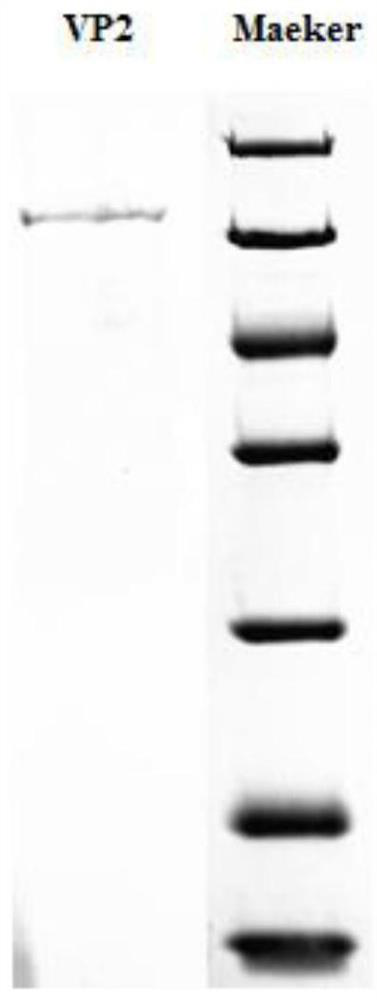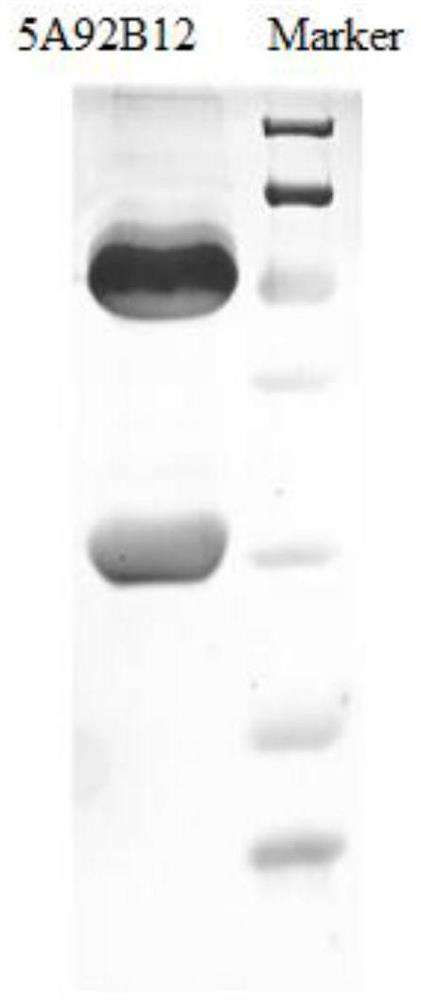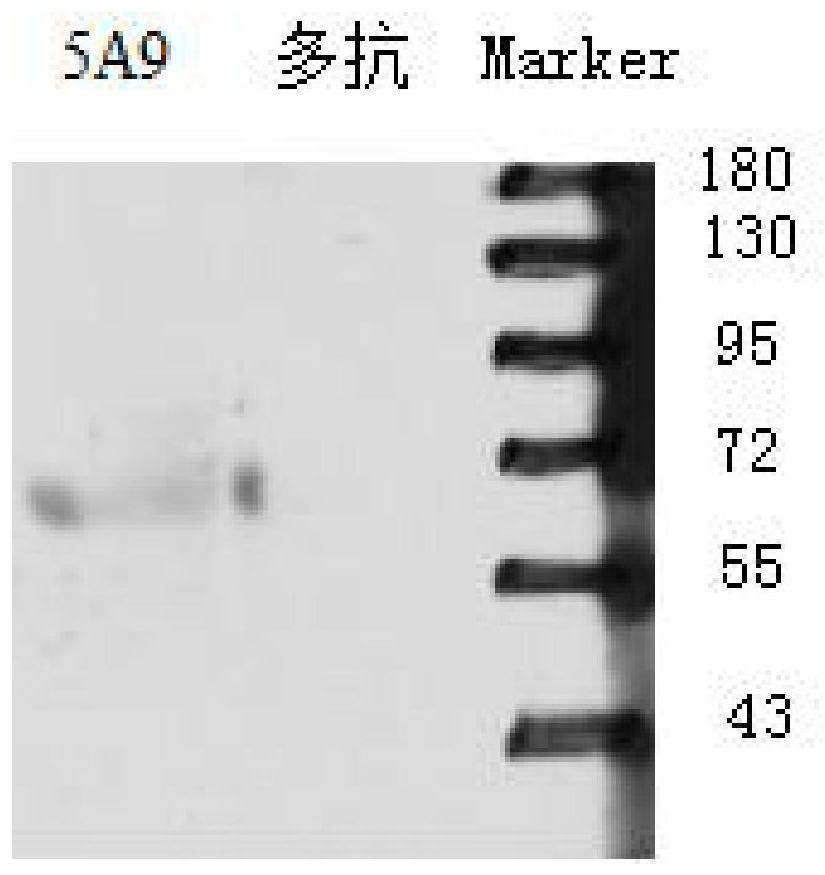Hybridoma cell strain, canine parvovirus VP2 protein monoclonal antibody generated by hybridoma cell strain and application
A hybridoma cell line, canine parvovirus technology, applied in the direction of antiviral immunoglobulin, antibody, antiviral agent, etc., can solve the problem of unsatisfactory preventive effect in puppies
- Summary
- Abstract
- Description
- Claims
- Application Information
AI Technical Summary
Problems solved by technology
Method used
Image
Examples
Embodiment 1
[0041] Canine Parvovirus Isolation
[0042] 1. Pretreatment of disease materials: Collect intestinal content samples of dogs suspected of being infected with canine parvovirus in a pet hospital in Lanzhou City, Gansu Province, add PBS solution at a volume ratio of 1:10, and centrifuge at 7000rpm for 15min. Take 500 μL of the supernatant and add an equal amount of chloroform, mix thoroughly, then centrifuge at 4000 rpm for 15 minutes, discard the precipitate, filter the supernatant through a 0.22 μm microporous membrane, and store it in a -20°C refrigerator for future use.
[0043] 2. Virus isolation: Inoculate F81 cells (purchased from Changchun Haiguang Biotechnology Co., Ltd., article number: HG-ATCCF81) with the above-mentioned treated disease samples by means of synchronous inoculation. 2 Cultivate in an incubator, and observe cytopathic changes (CPE) every day; continuous blind passage culture, CPE can be observed when it is passed to the 4th generation, and it is named C...
Embodiment 2
[0052] Establishment of hybridoma cell lines
[0053] 1. Experimental materials
[0054] 1. Antigen: the canine parvovirus VP2 protein was expressed as an antigen by the prokaryotic expression system in the above-mentioned embodiment 1;
[0055] 2. Culture medium: Hyclone DMEM medium was purchased from Thermo Company; HAT was purchased from SIGMA Company; HT was purchased from SIGMA Company;
[0056] 3. Experimental animals: female Balb / c mice, 8-12 weeks old, raised under SPF conditions;
[0057] 4. Other experimental materials: Freund's complete adjuvant and Freund's incomplete adjuvant were purchased from SIGMA Company; PEG4000 was purchased from MERCK Company; HRP-goat anti-mouse IgG antibody was purchased from abcam Company; the rest of the reagents were domestic analytically pure products .
[0058] 2. Method steps
[0059] 1. Animal immunity
[0060] (1) First immunization: mix equal volumes of VP2 antigen and complete Freund's adjuvant, and emulsify with a hand-he...
Embodiment 3
[0076] Preparation and Identification of Monoclonal Antibody Against Canine Parvovirus VP2 Protein
[0077] 1. Antibody preparation
[0078] Choose Balb / c mice aged 6-8 weeks, and inject 0.5 mL of liquid paraffin intraperitoneally, 0.5 mL per mouse. One week later, hybridoma cells were inoculated intraperitoneally, and the number of inoculated cells per mouse was 1×10 5 ~1×10 6 indivual. After an interval of 5 days, when the abdomen is obviously enlarged and the skin feels tense when touched with hands, the ascites can be collected with a No. 9 needle.
[0079] The ascitic fluid was centrifuged (13000rpm, 30min) to remove cell components and other precipitates, and the supernatant was collected. Purify with Protein-Sepharose CL-4B, the upper column liquid is 20mM PBS buffer solution, the eluent of column chromatography is pH 2.7, 20mM glycine buffer solution, and the monoclonal antibody against canine parvovirus VP2 protein is obtained, which is tested by SDS -PAGE antibo...
PUM
 Login to View More
Login to View More Abstract
Description
Claims
Application Information
 Login to View More
Login to View More - R&D
- Intellectual Property
- Life Sciences
- Materials
- Tech Scout
- Unparalleled Data Quality
- Higher Quality Content
- 60% Fewer Hallucinations
Browse by: Latest US Patents, China's latest patents, Technical Efficacy Thesaurus, Application Domain, Technology Topic, Popular Technical Reports.
© 2025 PatSnap. All rights reserved.Legal|Privacy policy|Modern Slavery Act Transparency Statement|Sitemap|About US| Contact US: help@patsnap.com



